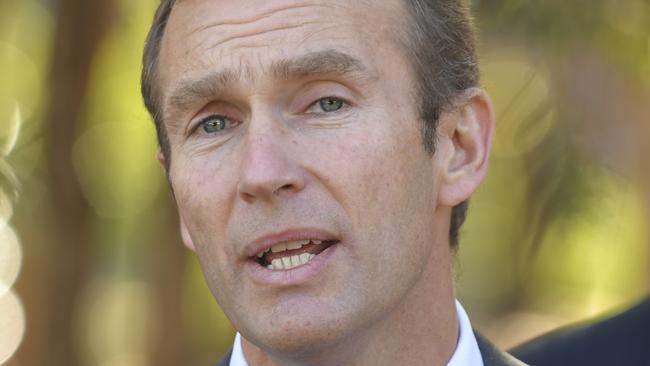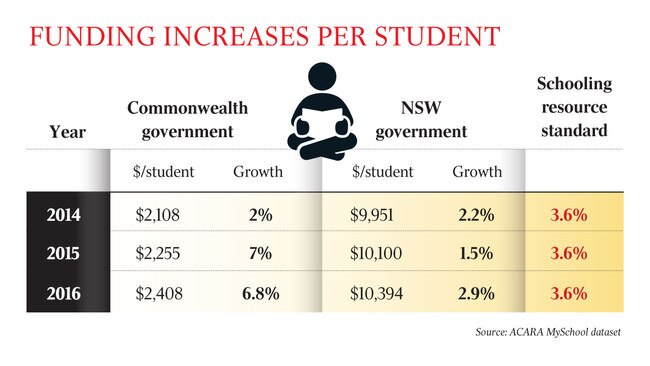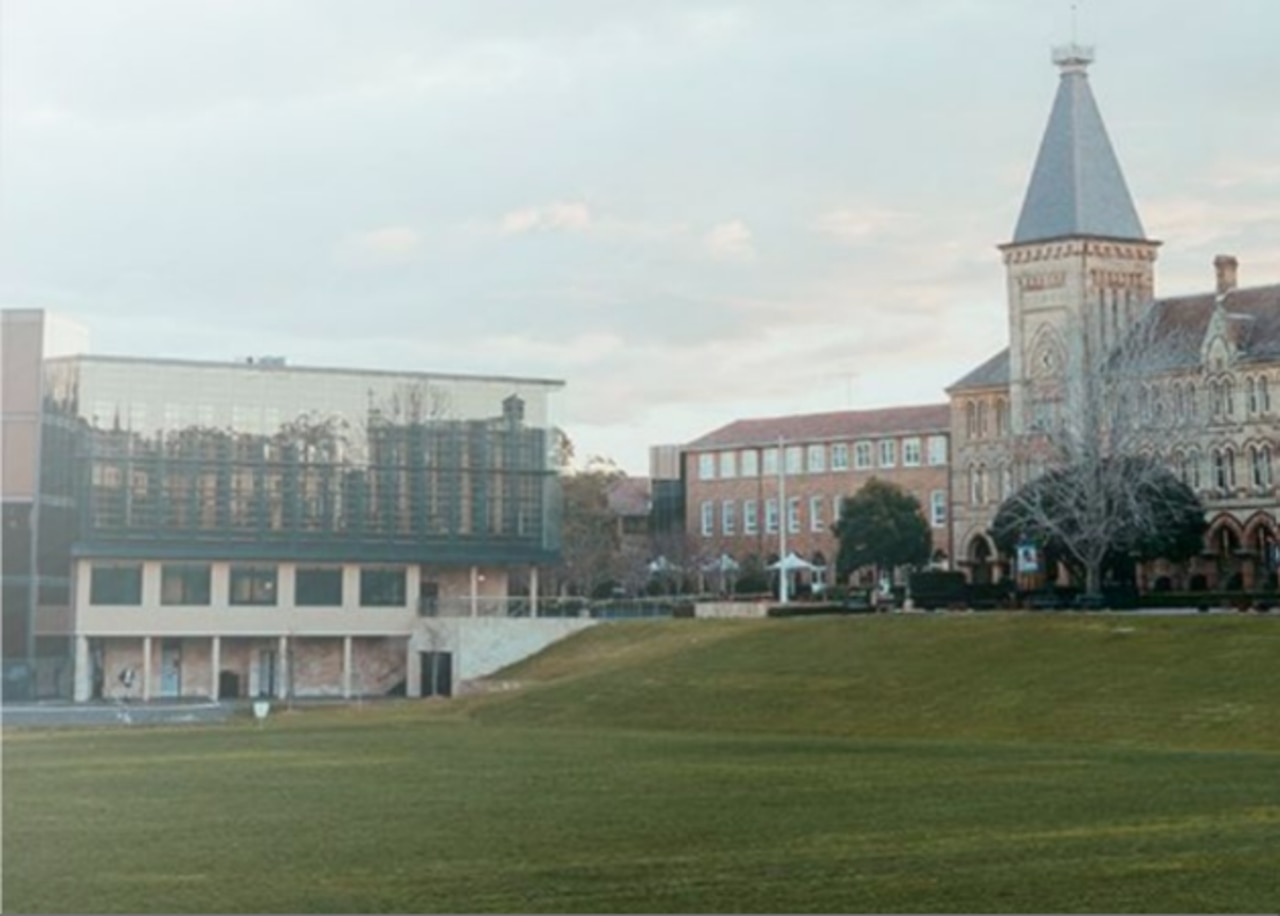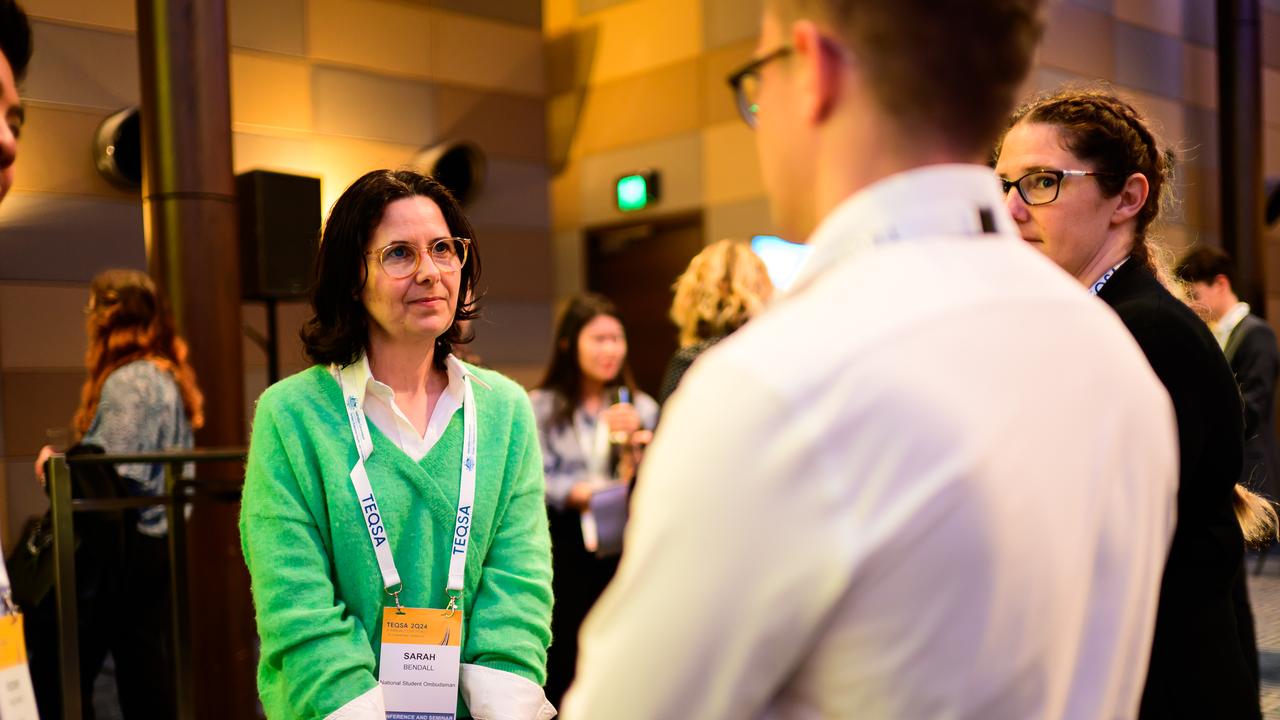NSW ‘keeps $330m from schools’
The NSW government has been accused of underfunding its public schools by $330m since 2013.

The NSW government has been accused of underfunding its public schools by $330 million since 2013, calling into question the state’s opposition to the commonwealth’s funding deal with Catholic and independent schools.
Claims by NSW Education Minister Rob Stokes that state schools had been short-changed by the landmark $4.6 billion deal have been described as a “smokescreen for his own government’s failure” following the release of data revealing the state had failed to keep pace with legislated rises to base education costs in recent years.
According to analysis conducted by researchers for the Catholic education sector, NSW government funding grew 6.8 per cent per student between 2013 and 2016, substantially below the 11 per cent increase to the national schooling resource standard that sets out the base cost of educating a student regardless of whether they attend a government or non-government school.
Set at $10,953 for a primary student and $13,764 for secondary, the SRS is legislated in the Australian Education Act. It is indexed to grow 3.6 per cent each year.
Meanwhile, the federal government’s contribution to NSW public schools grew 16 per cent over the same period, despite it being required to contribute just 20 per cent of the SRS.
Catholic Schools NSW chief executive Dallas McInerney accused the NSW government of “blatant cost-shifting” and singled out former NSW education minister Adrian Piccoli for overseeing the lack of funding growth.
“As the majority funder of its government schools, the NSW government should have increased its funding by at least 3.6 per cent a year,” Mr McInerney said.
“Had it done so, NSW government schools would have some $330m extra in 2016 and much more today.”

Mr McInerney’s Victorian counterpart, Stephen Elder, who led a campaign in recent months for reform to improve funding for Catholic schools, accused Mr Stokes of “grandstanding” after he threatened to vote against the deal that proposes a new method of calculating how non-state schools are funded.
The new model was recommended by the independent National School Resourcing Board.
“We have a state government threatening to derail a national agreement for schools by demanding more funding … while at the same time rationing what it gives to public school students,” Mr Elder said.
“This hypocrisy is made crystal clear from the data on funding for public schools in NSW.”
Mr Piccoli, now a director of the Gonski Institute of Education at the University of NSW, said he was not in a position to verify the Catholic analysis of funding.
He said he was concerned about how non-government school systems planned to deploy the extra funds they had been promised given public comments from Catholic sector bosses about supporting schools in wealthy, metropolitan areas to keep their fees down to maintain families’ rights to choose a Catholic education.
“I’m not sure that’s what Gonski had in mind when he referred to needs-based funding,” Mr Piccoli said.
Concerns about funding of NSW schools were also highlighted in a report released by the NSW Teachers Federation this week, which claimed the state government would need to pitch in an additional $470m to meet its share of the SRS.
Under the current agreement, states are required to fund up to 80 per cent of the SRS, while the federal government pitches in 20 per cent.
A spokeswoman for Mr Stokes, who is on leave, said NSW spent more per student than any comparable state and significantly more than the national average.
“NSW funding for government schools increased by $660 per student from 2013 to 2016, while commonwealth funding only increased by $340 over the same period,” she said.
“We welcome the additional funding for the non-government school sector recently announced by the commonwealth.
“However, it is important that additional money is made available to all school sectors.”


